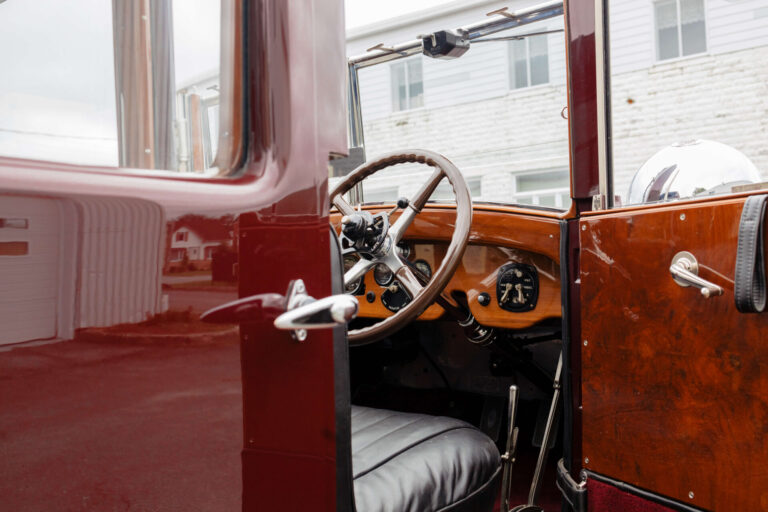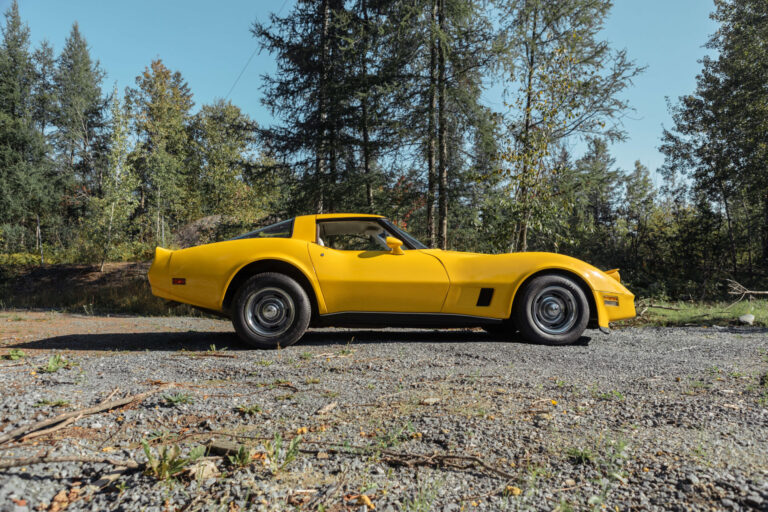The Automotive Dream “One man and his dream had not simply left the world with an engine and four wheels; Henry Ford and his Model T had influenced people's everyday lives - where they lived, how they spent their leisure time, even how they viewed themselves.” - Gary...
The 1910 Darracq A11 T Roadster
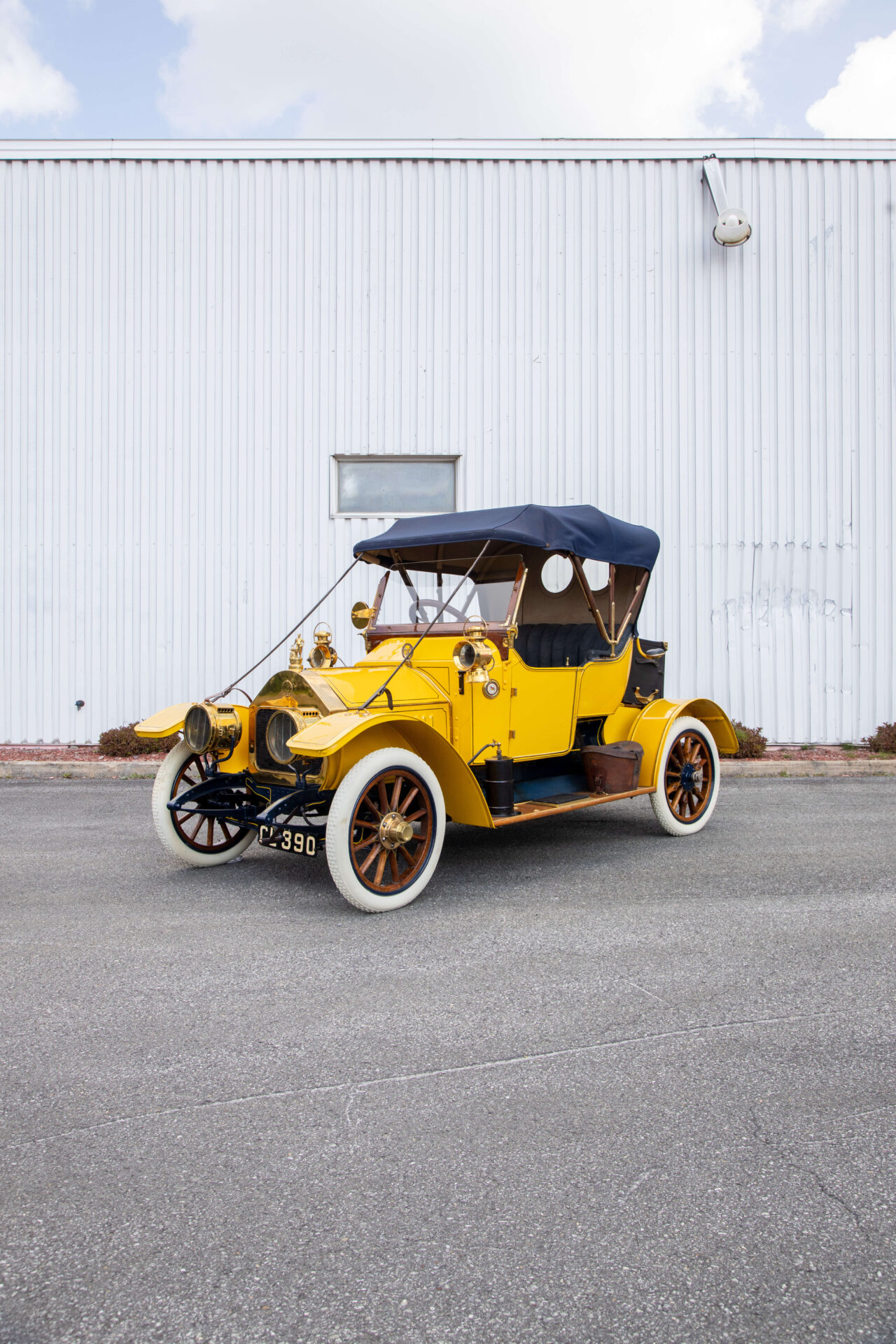
Photo credit - Good Vision Prod
Recent posts
Lagonda 16/80 Special Six 1933
English Touring The car we present to you this week is the Lagonda 16/80 Special Six in the Demers Car Collection. Lagonda was a luxury British car brand that Aston Martin eventually absorbed. Through its association with Aston Martin, it is sometimes hard to remember...
An Introduction to Lagonda
Before Aston Martin “The history of Lagonda cars is synonymous with sophistication, opulence, and groundbreaking performance” - An article for Discovery UK Today, we may recognize the name Lagonda from its association with Aston Martin. Before these two brands...
Cadillac Model A 1903
The Standard of the World “No other American car on the market in the first decade of the century was constructed to higher standards than Cadillac.” - Stephen W. Sears in The Automobile in America Some of you may know that Cadillac has long had the slogan “Standard...
Pioneer of the road
Although the invention of the first automobile happened in Germany, it is in France where the industry first flourished. Darracq was one of the first important players competing with De Dion Bouton, Renault and Peugeot for market share. Among other innovations, we attribute the world’s oldest V8 to Darracq. The French brand has also left an important mark in the early world of racing. The Darracq A11 Roadster in the Demers Car Collection dates all the way back to 1910. Keep reading to find out how the brand came to be, about its racing history, this particular car and how Darracq is connected to Alfa Romeo and Opel.
How Darracq Came to Be
Alexander Darracq was a trained engineer whose career led him to work in different fields before getting into car manufacturing. He found financial success selling Gladiator bicycles before the turn of the 20th century. Like many other automobile pioneers, Alexander sensed that the future of locomotion lay in the automobile and sold his previous interest in the bicycle industry to focus on self-propelled vehicles. After toying with the idea of making electric cars, Alexander bet on the combustion engine.
Compared to other vehicles produced at the time, the first Darracq, made in 1900, had an advanced design along Panhard lines. It had an engine mounted in the front and not under the seat like many cars did at the time. Applying lessons he learned in his previous business ventures, the car business was successful from the start. Darracq focused on mass production and around 700 cars were manufactured in the year 1900. Darracqs were quickly known for their advanced mechanics and overall quality. The French company soon found financing in the United Kingdom and eventually expanded operations to Germany and Italy.
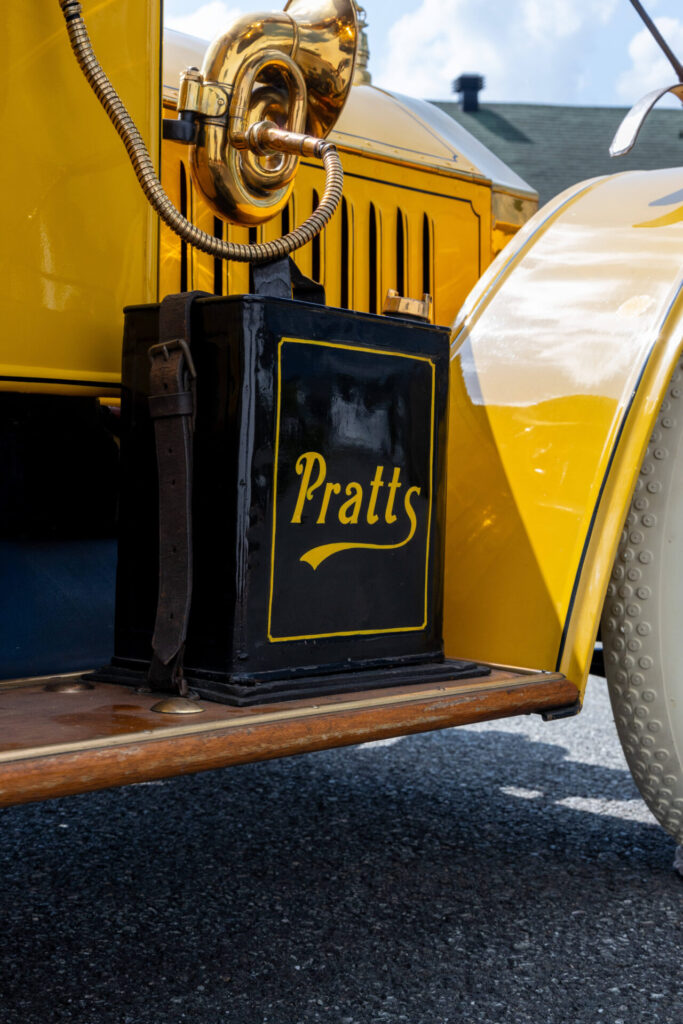
Darrack and Racing
One cannot discuss the development of the automobile industry and the history of Darracq without touching on motor racing. Races of all kinds quickly became popular in the 1900s as it was a way for manufacturers to prove their car’s different qualities like performance and reliability. Becoming a popular sport, racing also provided great exposure and marketing for car makers and often improved sales.
Darracq cars were used for racing as early as 1901 and their reputation was beginning to solidify by 1902. Throughout the years, Darracq won many races on both sides of the Atlantic. Indeed, a Darracq won the second Vanderbilt Cup Race in America in 1905.
Interestingly, Alexander Darracq himself did not like racing that much but tolerated it as a business concern. It seems that the automobile industry was just an engineering and entrepreneurial challenge for him, not a passion. He himself had never learned how to drive.
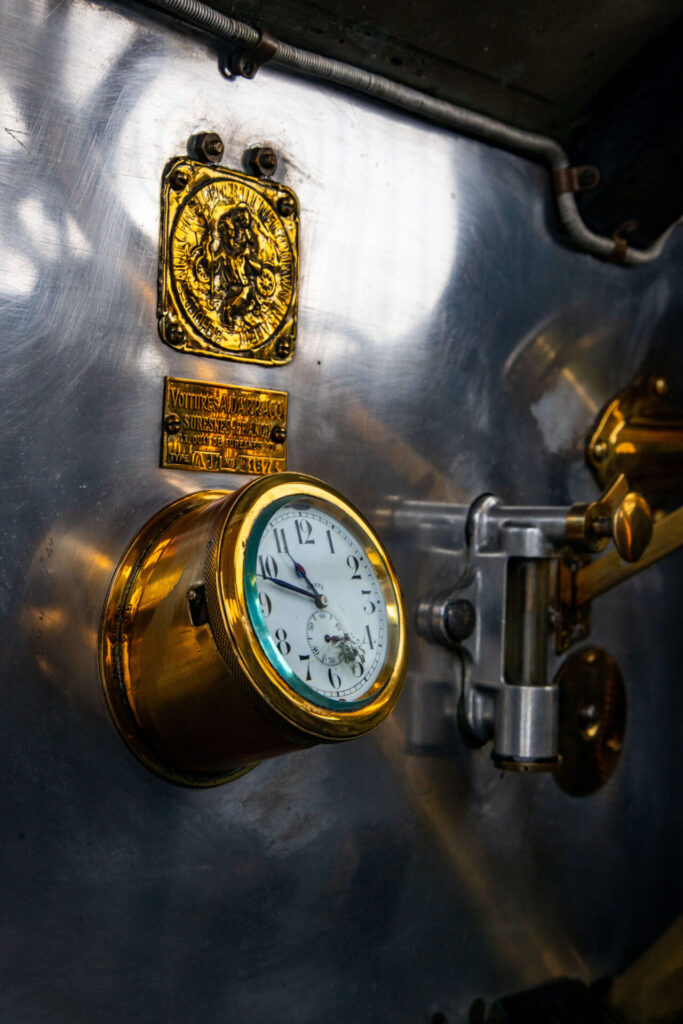
The Darracq A11 T Roadster
The Darracq you see here is a 1910 A11 T Roadster. Although it looks very different from today’s sport or race cars, it actually has a sporting body. Darracqs such as this one were used for racing. This particular model has a chronowatch to monitor performance in its dashboard as well as a special hat basket to store the pilot’s racing helmet.
From the year of its manufacture and brass details, this Darracq is a good example of a car from the horseless carriage era (or the Brass Era for our European friends). The 4-cylinder model was on the luxury end of an eight model selection offered in 1910. It is believed that the modern tail lights seen on this car were added during a restoration to make the car roadworthy. Although carbon black was added to rubber tires as early as the beginning of the 1900s, the Demers Car Collection has chosen to maintain white tires on this vehicle. Even if they are a lot less durable, they look great and remind us of the so distant time period when the automobile industry was in its infancy.
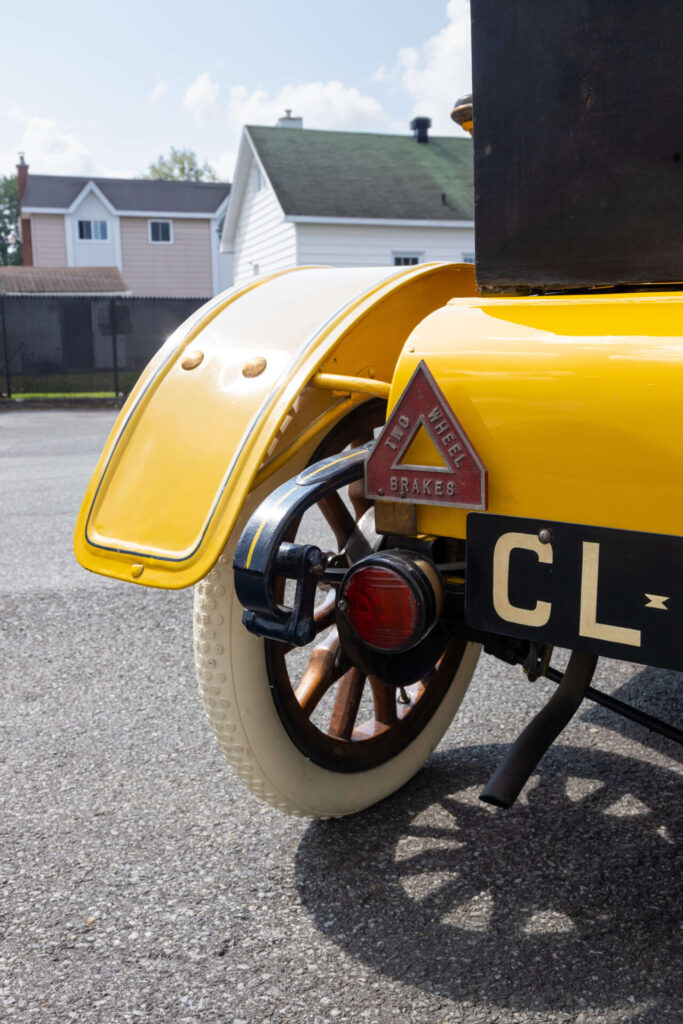
A Mascot Fit for a Pioneer
The French brand’s mascot is quite elaborate: it represents a workman holding a steering wheel on top of an anvil. The anvil and the workman represent well the early years of automobile production. Before the use of automation and assembly lines, cars were made by hand by craftsmen. Indeed, someone had to forge each metal panel that made up a car. If you look close to the brass radiator of this Darracq, you can see remnants of hammer hits that look like dimples on the metal sheet. The mascot’s proud stance represents the hand labor that goes in the construction of each vehicle, a pride shared by the Darracq company and every Darracq car owner.

The Alfa Romeo and Opel Connection
Although we don’t hear about the Darracq name today, two living car brands’ paths can be linked back to it. Both German Opel and Italian Alfa Romeo history lead back to Darracq. The Anonima Lombardi Fabbrica Automobila, or ALFA, was created from the sales failure of the Societa Anonima Italiana Darracq (SAID). SAID locally assembled Darracq cars to be sold in Italy. Once the Italian attempt to market Darracq cars failed, the new ALFA company adapted what was left to make cars better suited to the harsher Italian roads under a new name. Eventually’ “Romeo” was added to the name of the company when Nicola Romeo took over the reigns. Similarly, the German Opel was born after Adam Opel learned the car trade by assembling Darracq cars under license. Before going on its own, Opel first produced cars jointly with Darracq called Opel-Darracq.
What Now?
In 1912, Alexander Darracq retired. The company survived the Great War by contributing to the war effort. In 1920, the firm merged with the British firms Sunbeam and Talbot. From that moment on, nomenclature became difficult, but cars that wore the Darracq name were still produced until 1939 by the Sunbeam-Talbot-Darracq group.
Today, Darracq is yet another orphan brand. The Demers Car Collection is proud to possess such a great example of early French car production. Not only is it a beautiful example of hand-manufacturing, but it holds an important piece of automobile history. Next week on the blog, we look at another branch of automobile history on the other side of the Atlantic: the creation of Studebaker.
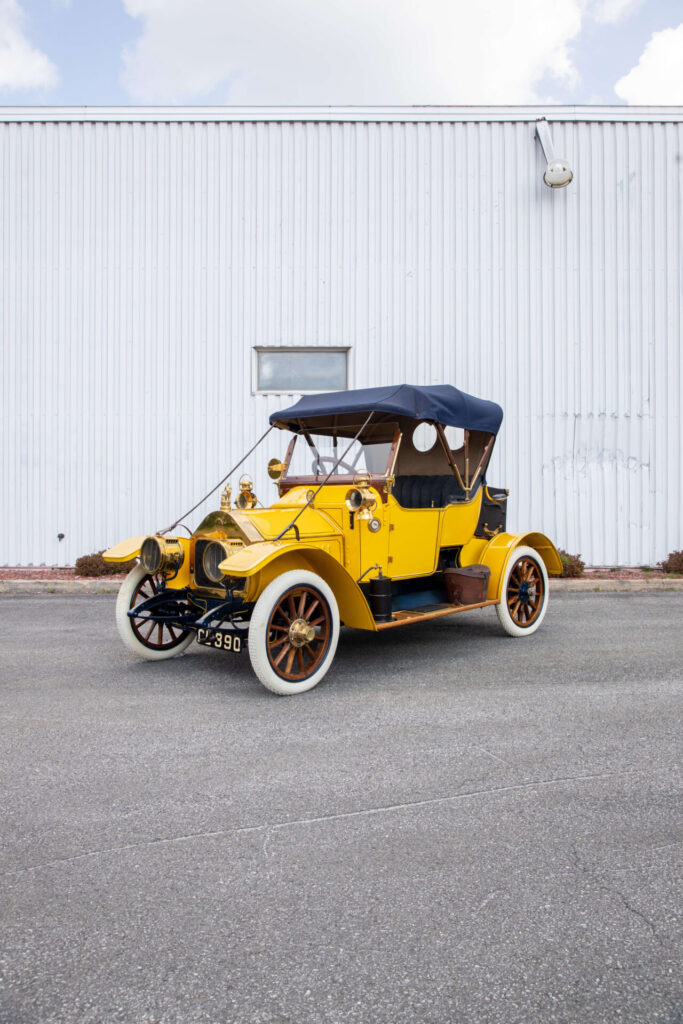
The Nitty Gritty
- L-head 4-cylinder engine
- 10 hp
- 3 speed manual transmission
- Light, pressed-steel chassis
- Cloth top
- Rushmore headlights
- A&A L acetylene generator
- Stewart speedometer


